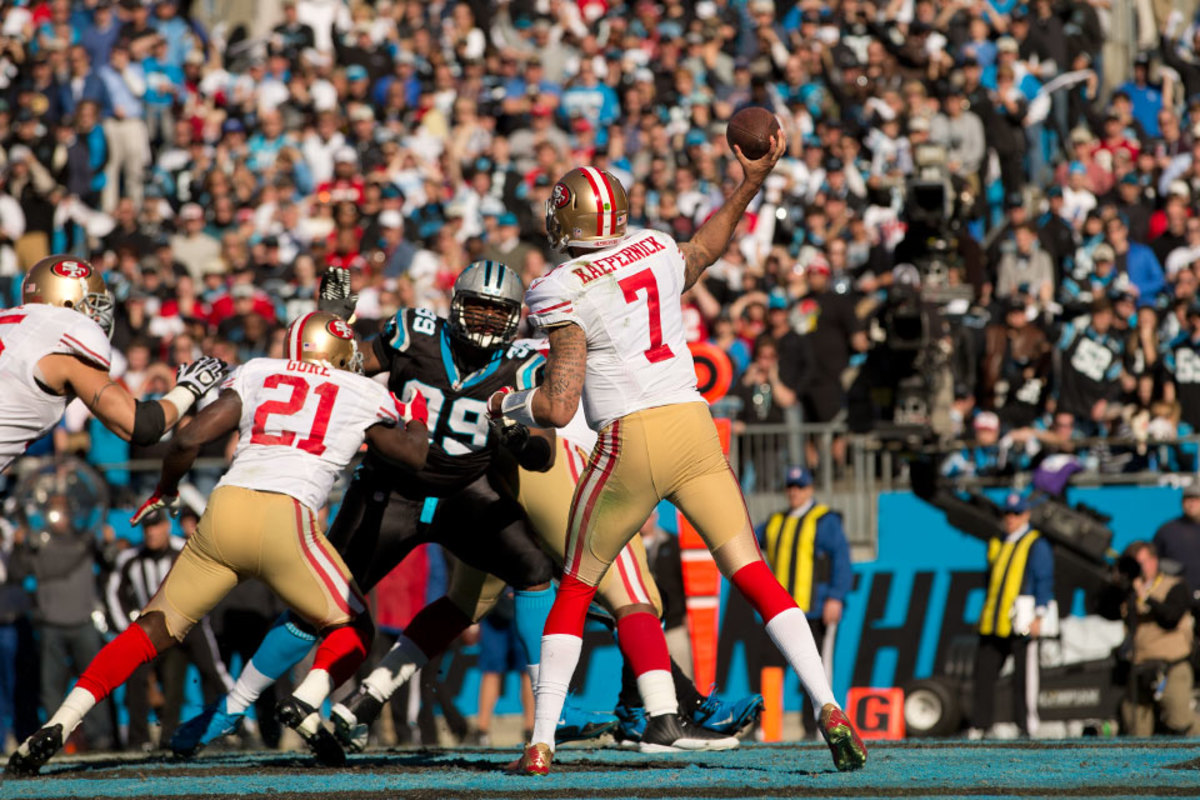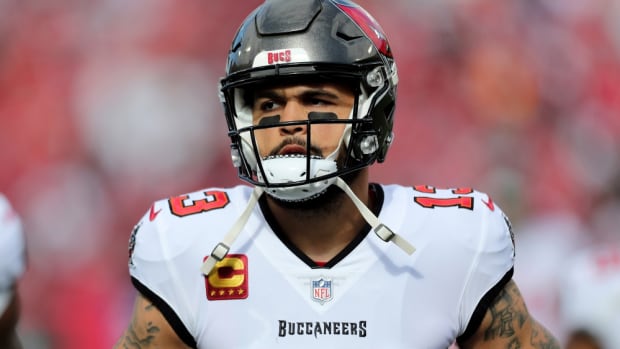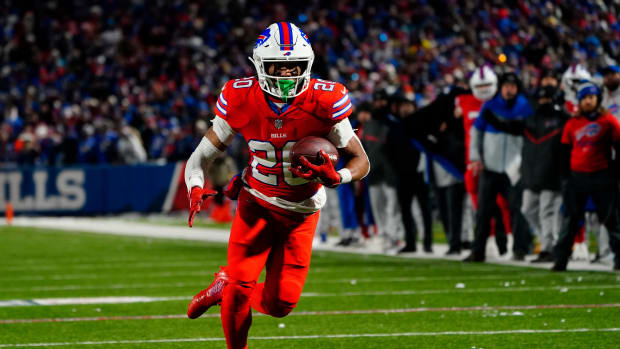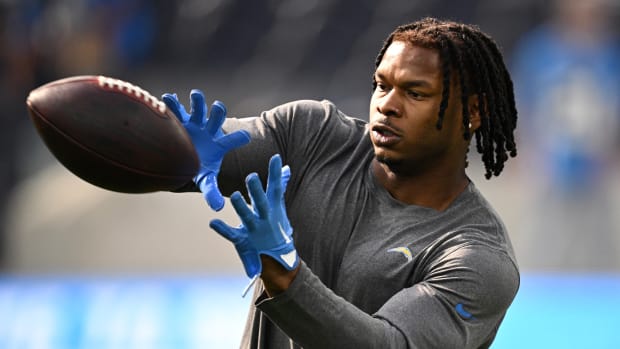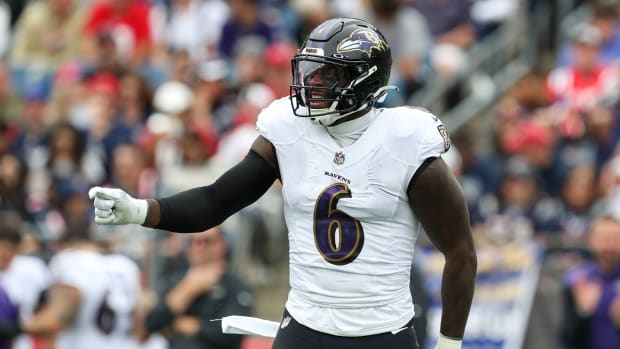Random Acts of Quarterbacking
The NFL game is set up for great pocket passers to flourish. Case in point: on Sunday, this generation’s best two pocket passers, Peyton Manning and Tom Brady, will appear in the AFC Championship Game for the fourth and eighth times, respectively. But in the NFC title game the quarterbacking ticket of Russell Wilson and Colin Kaepernick evokes a familiar but fascinating discussion that has heated up over the past two years: Can an NFL team enjoy sustained success with a run-oriented quarterback?
So far this discussion misguidedly has focused on whether the read-option will revolutionize the NFL. But schemes don’t revolutionize sports—players do. Every scheme derives from a coach trying to highlight players’ strengths, mask their weaknesses or combat opposing players’ strengths or weaknesses. Read-option is just another schematic tactic.
So can a team sustain success with a quarterback who’s wired to run as much as throw? We’ve learned from guys like Seneca Wallace, Tim Tebow and Terrelle Pryor that a quarterback who can run but not throw doesn’t work. And we learned from Steve Young, Donovan McNabb and Steve McNair that a quarterback who can run and throw does work—really well, in fact.
But Young, McNabb and McNair never had to run; they could work deep into their progressions from the pocket. And they didn’t have otherworldly speed and agility—they were just very capable scramblers who could fully capitalize on opportunities with their legs. Russell Wilson falls into this class; Colin Kaepernick does not. Kaepernick has the long strides, acceleration and burst to create game-changing opportunities with his legs. And being a primitive field-reader, he often has to.
A quarterback like this is rare, but we’ve seen it before—most recently in Michael Vick in Atlanta. Like Kaepernick, Vick had a rocket arm but, being inconsistent in progressions reads, he relied heavily on his surreal running prowess. We never got to see if Vick’s style could truly thrive. Being 6-foot, 215 pounds and not knowing how to avoid or absorb hits, he couldn’t stay healthy enough to become a stable franchise quarterback. (And he went to prison at the height of his athletic prime.)
In five career playoff games, Kaepernick is 4-1 with 377 rushing yards and a 9.43 yards-per-carry average. (Simon Bruty/SI)
There have been concerns about Kaepernick’s exposing himself to hits, but through 37 career games and 197 career runs, the 6-4, 230-pounder has had no significant injuries. For discussion’s sake, let’s say Kaepernick remains relatively the same player for the foreseeable future. (Which very well could happen.) That means he’d be a sensational athlete with unrefined mechanics (particularly footwork), but he’d still have good accuracy thanks to an innate sense for ball location (something Vick didn’t have). It also means Kaepernick would be a limited field-reader, often needing play structures with defined reads and no more than two progressions per dropback.
Can this work?
Kaepernick is one game away from his second Super Bowl in two years, so it’s easy to say, “Of course it can!” But we’re talking long-term here. Right now the Niners are one of the few clubs that have all the other pieces in place. Their running game is stalwart, their offensive line is monstrous, their defense is formidable and their special teams are stable if not spectacular. That’s great, but such across-the-board excellence is nearly impossible to maintain under the NFL’s salary-cap structure. At some point Kaepernick will have an average supporting cast, like Tom Brady has in New England. How effective can he be then?
Brady’s stability and football IQ allow the Patriots to build great systems with middling players. Kaepernick’s best work is done through improvisation which, almost by its very definition, is something you can’t build around. If a coach doesn’t know where his quarterback will go on a given play, how does the coach create plays that form a cohesive game plan? And how do the other 10 guys on offense practice and perfect the nuances of their craft? Randomization can’t be mastered.
Jim Harbaugh and offensive coordinator Greg Roman have done a brilliant job working around these factors. Armed with the talented resources surrounding Kaepernick, they’ve constructed the NFL’s most creative power running game. In the passing game, they’ve managed to highlight Kaepernick’s skills through shrewd yet simplified designs. Even then, Kaepernick still can randomize things. Here’s a great example:
What does Harbaugh tell his young QB when studying this play on film? Obviously, it was a great run, but Kaepernick ignored the essential timing and mechanics that quarterbacks and coaches work on so diligently. Does Harbaugh remind Kaepernick that, while running worked this time, he can’t count on it regularly in similar situations? (There have been plenty of occasions in which Kaepernick has left open receivers on the field to scramble for negligible yards or throw a late incompletion.) Or does Harbaugh just pat his young star on the back (likely a tad too hard—just ask Jim Schwartz) and implore him to do it again?
While defenses fear Kaepernick’s running, they also know exactly how to make him uncomfortable: by keeping him in the pocket. Inevitably, there will be crucial situations in which Kaepernick has to make plays strictly with his arm. The Niners learned this the hard way at the end of last year’s Super Bowl. With the Ravens often using an all-out blitz in the red zone, San Francisco had to ask its quarterback to make quick, tight-window throws. Kaepernick did not come through.
So should Harbaugh and Roman keep catering to Kaepernick and hope that it continues to work well enough? (They’d be the first modern-era team to prosper with this style over a long period.) Or do they spend their finite time and energy helping Kaepernick add more fundamental quarterbacking attributes to his repertoire?
Really, this question is more for the offseason. In the postseason, coaches do whatever gives them the best chance to win. For now, that means having Kaepernick run wild.
* * *
(Chris Keane/Sports Illustrated/The MMQB)
More on Kaepernick from The MMQB:Peter King profiled the San Francisco sensation as he prepared for his second season. And Robert Klemko found another potential flaw in the QB’s game after the Wild Card win over the Packers.
































